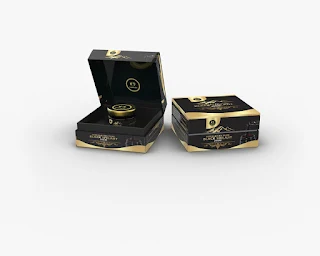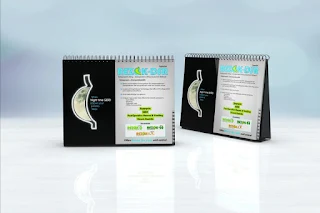What is a good design? Find out if your brand has a good design? Are you happy with it/them? Are your customers happy with it/them?
The idea behind designing is communication, engagement and more modes of connection.
"A good design is a great way to engage."
Designs are a great
way to engage but is every design a good design? Here’s what makes a design
thoughtful, responsible and intelligent and why in business should you take a
leap towards a good design rather than just a design.
Let’s talk about some
core principles that can help you identify if the design is out-and-out and will
it perform as expected. So, buckle up and find out for yourself, “Is my design
a good design?” Though there is no rulebook or finite criteria for designating
a design the “Good” title, it has to be viewed through different eyes, glasses,
focus and perspectives. Yet we have come up with a few to help.
#1. Emotions in
Exemplary Combination:
Combining the
designing elements to speak out unlimited emotions even with a limited choice
of colour and patterns is what a good design aims at.
Radical thinking and
rethinking go into a design's making. As of today, not just any design gets to
be the best design. And when you strive to use a design for your brand, you
need to look into multiple aspects for it to make the mark as and when and
where as expected or desired. Besides meeting the professional standards, a
design should also be responsible. Every design has responsibilities towards
innovation, creativity, sustainability, environment, branding, technology,
honesty and more for it to be an outstanding piece marking excellence in
designing.
The design should
intend to be in its highest form, functional and performing while being
aesthetically pleasing at the same time. For a brand, it is never only the
owner’s sentiment that goes into branding but it should be a touchpoint for
many. As many touchpoints are reached, as high the brand grows and that’s how a
design gets its public identity. A good design addresses the psychological
needs of the viewers.
Whether it’s for a
company’s logo design or its packaging, its Pharma visual Aid, its description or advertising and
marketing, the graphics, fonts, colour combinations, content and more need to
be worked upon unless it hits the bull's eye.
#2. Self-explanatory
yet complex:
A good design should
reveal something about itself and yet instil curiosity in the viewer to watch
it again. A glimpse should be captivating and that happens with odd things.
When a user gets to see something expected, then he/she loses interest and
moves on just like turning the pages of a boring book. But, if you want the
user to engage, you will have to deliver an indulging design. And it should not
be as complicated as again to cause a drop-out.
#3. Concise and
Precise:
A good design should
use a minimum and deliver the maximum. A single dot on a blank paper can be the
most elegant design if it catches the attention of the user. Rest all are just
the sprinklers, managing the clutter. By saying a good design needs to be
concise simply means that it should not be a hotch-potch and use minimum
elements. If you get my point, you know many times black and white sketches are
more lively than coloured pictures.
For being concise, a
good design uses all essential elements and keeps all fluff off the bay.
Being precise means
being subtle to its functionality. The message should accurately reach the
consumer while it being so captivating as to leave its impression on the user’s
memory for a long. If you can make it stay in the small portions of maximum
brains (that small portion that is in use), you can expect it to be remembered
and even turned into a business conversion.
As little as possible
and more meaningful as possible is what concise and precise mean here.
#4. Odd one out:
Odd ones are picked
in just a speck of a second. Every viewer catches the odd things out and
forgets the crowd. So, a unique design should also be that Odd One Out.
#5. Go with the Flow:
Where there is
innovation, do not stick to any rule book. There are no rules in creation and
innovation. But there are a set of guidelines that you need to adapt and change
as and when required.
#6. Value addition:
A product can have
its value-added with an elegant design. A brand’s potential can be maximized by
enhancing a product’s elegance. If a design makes the user see its use and can
tempt them to buy, the design has done its job well.
A good design
emphasizes the utility of the product since the final intention is to help it
play its role in the buyer’s purchase journey.
And it should mean to
bring back return buyers and hence purchase journey should repeat multiple
times. This can happen only if the product is not just pleasing in looks but
also useful and well-executed. A good design gets its meaning only if the user
is happy with the product. Happiness should come from design and product
together to make it consequential. So, a design is a good design if the
user’s delight is coming both from the design and the product.
#7. Informing:
A good design informs
the user about the product. Furnish the buyer with informing visuals so that
he/she does not need to spend more time reading and finding out the necessary
information. Buyer may or may not read in the language mentioned, may not have
enough time to spend in the supermarket or online store just finding out the
product’s utility. The good design informs the user a little and tempts him/her
to extract more information from the content.
Design is made
according to the purpose it intends to serve. And every element used in the
design should reflect this character and hence it essentially needs to be
focussed.
While informing the
viewer, the design should have space for the user's imagination and expression
to be parked.
#8. “Honesty is the
best policy.” (-Benjamin Franklin)
A design should be
honest in revealing what it has been made for. Though every user has his/her
perceptions and draws conclusions based on that. But a good design is never
misleading. It does not make a product look like what it is not only to mislead
the buyer for the product to be bought. Such purchases are made only once and
not again and again. Besides, with social media being used as one of the
biggest marketing tools today, good as well as bad reviews and other
user-generated content are transparent. So, an unhappy customer can do more
worse than the good as can be done by a happy customer.
#9. Long-lasting:
Designs that leave
long-lasting impressions are long-lived. Remember some ad films from childhood?
Do you still sing its tune or lyrics or is there a brand you have been using
for years and still have a mark of its first ad that you saw long-back? That’s
what does a long-lasting design means.
#10. Eco-friendly:
A design should be
the environment’s friend. It’s high time we realize our responsibility towards
the environment at individual levels as well as collectively as the community.
Our responsibility should reflect in our designs.
#11. Never-ending:
Innovation is
never-ending and so is creativity.
#12. Pellucid:
A good design is
transparent in delivering the exact message. More unnecessary elements just
mean more clutter. Keep your design as clean and as green (eco-friendly).
Learning should be
never-ending. Every design can inspire to improve for the better and further
better and it goes on. And there is always room for more just like a black
hole. So, keep flowing in your creativity and innovation to develop new
good designs.
We at Aadya
Enterprises are learners and designers. Contact us for our exclusive services in creating Good Designs.










0 comments:
Post a Comment